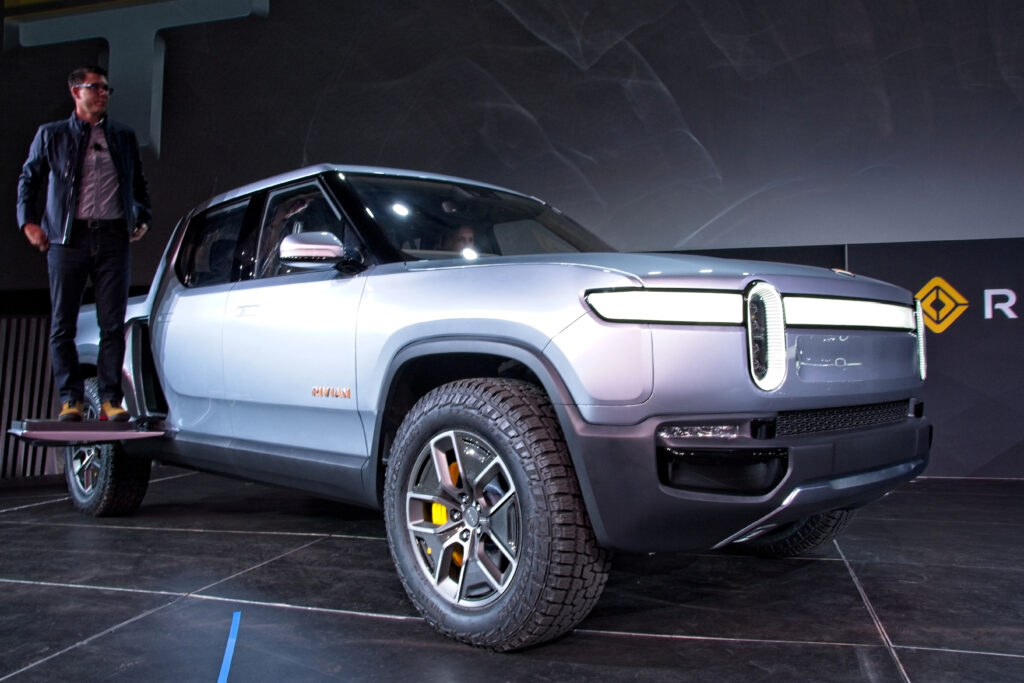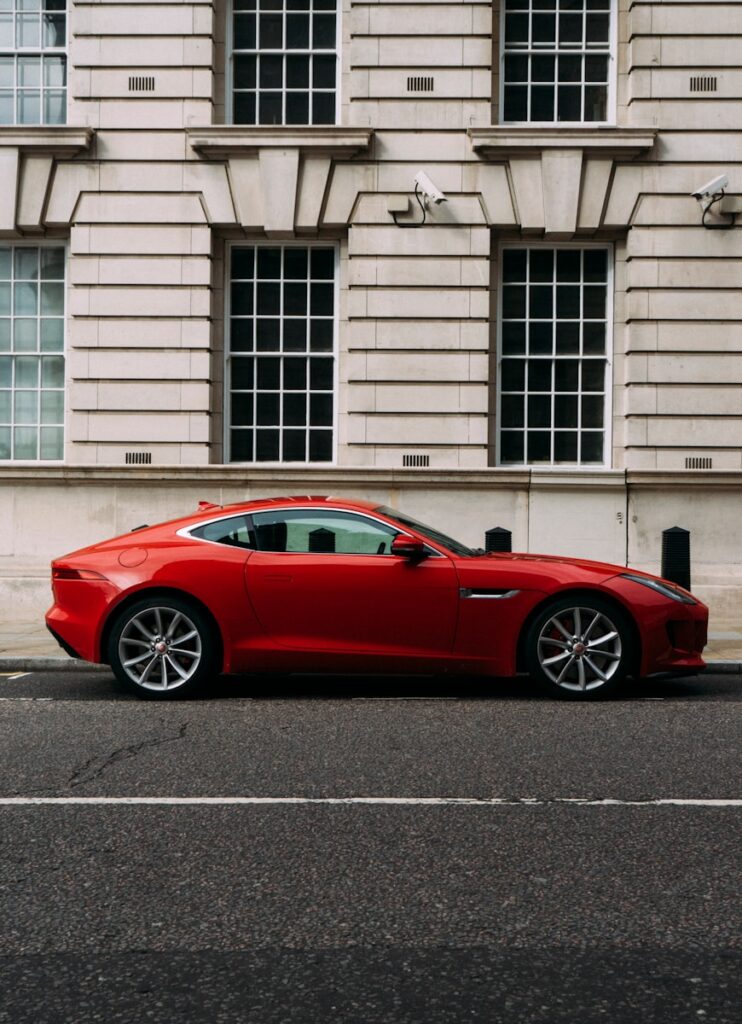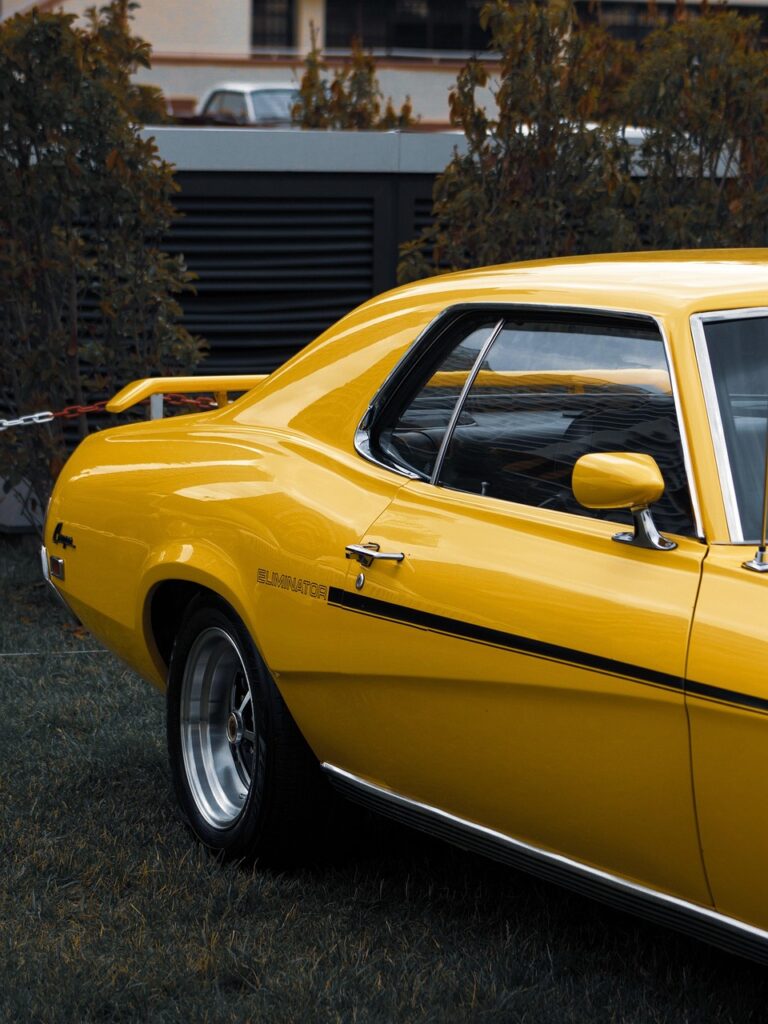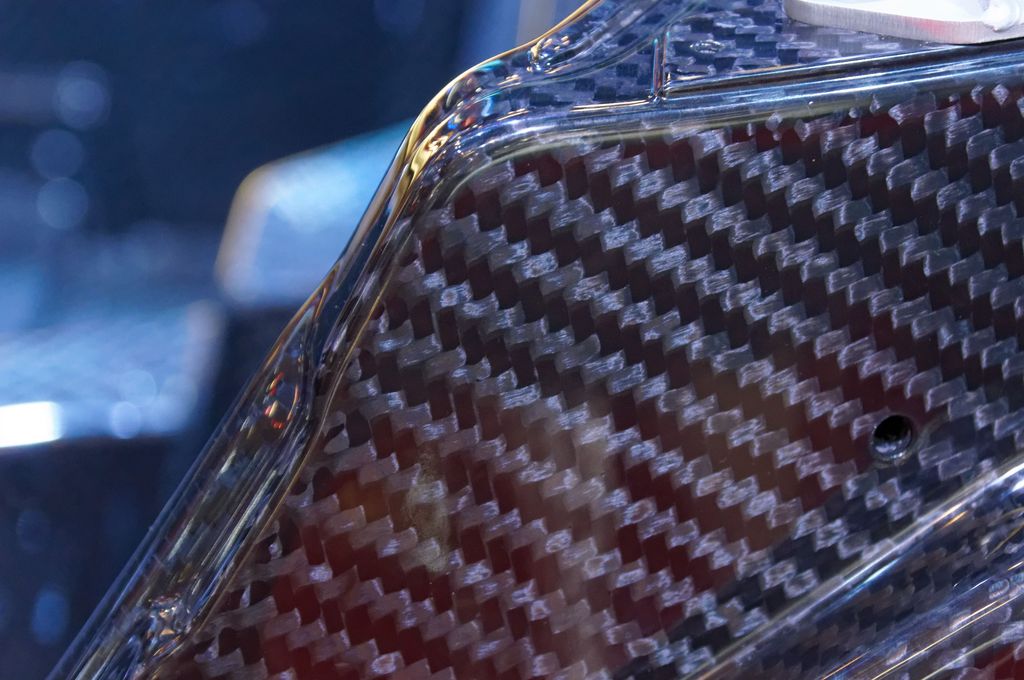
The world of automobiles is a fascinating tapestry woven with innovation, engineering marvels, and a profound impact on society. From their humble beginnings to the sophisticated machines we navigate today, cars represent not just a mode of transport but a testament to human ingenuity. As consumers, our journey into vehicle ownership often begins with a conversation, and being well-versed in the foundational truths of automotive history and technology can significantly enrich that experience, turning a simple transaction into an informed partnership.
Understanding the intricacies of what makes a car—its origins, its evolution, its underlying mechanics, and its broader implications—is more than just academic curiosity. It’s about being an empowered buyer, capable of appreciating the value, innovation, and design principles behind every model. This deeper knowledge fosters clarity, builds trust, and ultimately helps you make decisions truly aligned with your needs and values.
This article aims to illuminate some key aspects of the automotive world that, if widely understood, could transform how we perceive and discuss vehicles. We’ll explore fundamental truths that often get muddled in popular discourse, offering insights that seasoned automotive professionals might genuinely wish every prospective owner brought to the conversation. By shedding light on these crucial car realities, we hope to equip you with a more robust understanding, paving the way for a more discerning and satisfying purchase journey.

1. **The True Birth of the Modern Car**It’s easy to look back through history and point to various steam-powered contraptions or early internal combustion experiments as the “first car.” However, defining the genesis of the “modern car”—a practical, marketable automobile for everyday use—requires a specific lens. The historical record points definitively to 1886 as the birth year of this modern marvel, when “the German inventor Carl Benz patented his Benz Patent-Motorwagen.”
Prior to Benz’s groundbreaking invention, there were indeed notable precursors. Nicolas-Joseph Cugnot built the first steam-powered road vehicle in 1769, a steam-powered tricycle that pioneered self-propelled mechanical locomotion. Later, in 1808, the Swiss inventor François Isaac de Rivaz designed and constructed the first internal combustion-powered automobile. These were significant milestones, demonstrating early attempts at motive power on roads.
However, these early inventions, while impressive for their time, often faced limitations such as problems with water supply or maintaining steam pressure. Carl Benz’s creation stood apart because it represented a cohesive design for an “everyday use” vehicle, setting the standard for what would become the global automotive industry.
Therefore, when discussing the lineage of automobiles, it’s crucial to acknowledge the “modern car’s” distinct beginning with Benz in 1886. This precision allows for a more accurate appreciation of automotive evolution, differentiating it from rudimentary self-propelled machines.
Read more about: Manhattan Unveiled: A Comprehensive Journey Through the Heart of New York City’s Enduring Legacy

2. **The Dawn of Mass Production**When we think of mass-produced cars, often the image of Henry Ford’s assembly line instantly comes to mind. While Ford’s contributions were revolutionary and undeniably expanded the scale of automotive manufacturing, it’s important to acknowledge the earlier pioneers who laid the groundwork for this industrial transformation. Large-scale, production-line manufacturing of affordable cars “was started by Ransom Olds in 1901 at his Oldsmobile factory in Lansing, Michigan.”
Olds’ innovative approach was based upon “stationary assembly line techniques pioneered by Marc Isambard Brunel at the Portsmouth Block Mills, England, in 1802.” These techniques, combined with “interchangeable parts” pioneered in the US by Thomas Blanchard in 1821, set the stage for modern manufacturing efficiencies. Oldsmobile’s Curved Dash, introduced in 1901, is widely considered one of the first mass-produced American cars.
Henry Ford, however, dramatically expanded upon these foundations, beginning in 1913 with “the world’s first moving assembly line for cars at the Highland Park Ford Plant.” This innovation had a profound impact: “Ford’s cars came off the line in 15-minute intervals, much faster than previous methods, increasing productivity eightfold, while using less manpower (from 12.5 manhours to 1 hour 33 minutes).” This system, later known as “Fordism,” became a global benchmark.
The rapid adoption of Ford’s moving assembly line transformed the industry, making cars truly affordable for the masses, as evidenced by an assembly line worker being able to “buy a Model T with four months’ pay” in 1914. Understanding this progressive development provides a clearer picture of how car manufacturing evolved.
Read more about: Unveiling the Architects of Understanding: A Deep Dive into Humanity’s Most Profound Scientific Discoveries

3. **Beyond Petrol: A Spectrum of Propulsion**For many decades, the internal combustion engine (ICE) fueled by petrol has been synonymous with the automobile. While it remains the dominant propulsion method for “most cars in use in the mid 2020s,” primarily burning petrol, the automotive landscape has always been, and is increasingly becoming, far more diverse. Over-reliance on the idea of only petrol cars overlooks a rich history and a rapidly evolving future of automotive power.
The context highlights a broad array of “Fuel source” options including “Petrol, Diesel, Natural gas, Hydrogen, Biodiesel, Battery, Fuel cell, Solar cell, Hybrids of the above.” Indeed, electric cars, far from being a recent invention, “were invented early in the history of the car,” becoming commercially available again in the 2000s and “widespread in the 2020s.” This signifies a return to early experimentation and a push towards sustainable alternatives.
The transition from fossil fuel-powered cars to electric vehicles is now a prominent feature in “most climate change mitigation scenarios,” driven by “concerns about oil dependence, tightening environmental laws and restrictions on greenhouse gas emissions.” This shift is rapid, with “as of 2025 one in four cars sold is electric.” This diverse ecosystem also includes hybrid vehicles and hydrogen vehicles, representing other facets of zero-emission mobility.
Therefore, limiting one’s understanding of car propulsion solely to petrol misses the comprehensive and dynamic picture. Appreciating the full spectrum of fuel sources is essential for any informed discussion about modern automobiles and their future.

4. **The Evolving Language of “Car” and “Automobile”**The words we use to describe our vehicles often carry more history and cultural nuance than we might realize. While “car” and “automobile” are frequently used interchangeably today, their origins and specific usage have evolved over time and vary geographically. Understanding these linguistic roots can add an interesting layer to conversations about vehicles.
The English word “car” is believed to originate from “Latin carrus/carrum ‘wheeled vehicle’ or (via Old North French) Middle English carre ‘two-wheeled cart’.” Both, in turn, derive from “Gaulish karros ‘chariot’.” It initially had a broader meaning, referring to “any wheeled horse-drawn vehicle, such as a cart, carriage, or wagon.” The term “Motor car,” attested from 1895, is still the “usual formal term in British English.”
On the other hand, “Automobile,” a classical compound derived from “Ancient Greek autós (αὐτός) ‘self’ and Latin mobilis ‘movable’,” entered English from French. It was “first adopted by the Automobile Club of Great Britain in 1897.” However, it “fell out of favour in Britain and is now used chiefly in North America,” where its abbreviated form “auto” commonly appears as an adjective.
Knowing this etymological journey enriches our understanding of these common terms. It clarifies why certain phrases are more prevalent in one region than another and how the meaning of “car” broadened. Appreciating these linguistic nuances helps ensure discussions about vehicles are factually accurate and culturally informed.
Read more about: Navigating the Shifting Tides: Why Classic Cars Face an Uncertain Future and How Savvy Collectors are Securing Their Legacy
5. **Complexity in Controls: More Than Just a Steering Wheel**Stepping into a modern vehicle often reveals a dashboard teeming with buttons, screens, and intricate systems, a far cry from the comparatively sparse interiors of early automobiles. It’s a testament to rapid technological advancement, and understanding this evolution helps appreciate the design and functionality of today’s cars.
Early cars like “the Ford Model T” featured a basic set of controls: a left-side hand lever for parking brakes and neutral, a right lever for throttle, and steering column levers for ignition timing. Pedals were for gears, reverse, and braking. Critically, “Modern cars’ controls are now standardised, such as the location for the accelerator and brake, but this was not always the case,” highlighting a significant journey from idiosyncratic designs to universal ergonomics.
Over the decades, “additional features and controls have been added to vehicles, making them progressively more complex.” These include conveniences like “rear-reversing cameras, air conditioning, navigation systems, and in-car entertainment.” While some “original controls are no longer required,” such as the choke valve or a crank, new technologies have introduced an entirely new layer of interaction, including “touchscreen controls.”
The increasing prevalence of electronic controls further underscores this evolution, as “early 2020s, cars have increasingly replaced these physical linkages with electronic controls.” This shift from mechanical to electronic systems not only enhances safety and comfort but also opens doors for future innovations like autonomous driving. Recognizing this sophisticated evolution helps consumers appreciate contemporary automotive technology.
Read more about: Unpacking the Past: 14 Vintage Car Features Modern Driving Left Behind (And Why We Miss Them)

6. **Car Weight and Safety: A Nuanced Perspective**It’s a common intuition to think that a heavier car is inherently safer, offering more protection in a collision. While there’s a kernel of truth to this, the reality of car weight and its implications for safety and the environment is far more complex and multifaceted. A simplistic view misses the broader picture, which includes the safety of others on the road and the ecological footprint.
The context states that “During the late 20th and early 21st century, cars increased in weight due to batteries, modern steel safety cages, anti-lock brakes, airbags, and ‘more-powerful—if more efficient—engines’.” As of 2019, cars typically weigh “between 1 and 3 tonnes,” with examples like the Chevrolet Suburban extended-length SUV reaching “3,300 kilograms (7,200 lb) (gross weight).” This increase is largely driven by safety features and robust construction.
However, the crucial nuance is that “Heavier cars are safer for the driver from a crash perspective, but more dangerous for other vehicles and road users.” This highlights a significant externality: the increased mass of a vehicle in a collision transfers more energy to lighter vehicles or vulnerable road users, potentially leading to more severe outcomes for them.
Furthermore, the weight of a car significantly “influences fuel consumption and performance, with more weight resulting in increased fuel consumption and decreased performance.” This directly links to environmental impact, as “without the shift towards SUVs, energy use per unit distance could have fallen 30% more than it did from 2010 to 2022.” Some places are even considering taxing heavier cars more, which can encourage manufacturers to use alternative materials. Understanding these intricate relationships provides a comprehensive view of car weight.
Read more about: Beyond the Tank: Unmasking the Dangerous Fuel Efficiency Trends and Driving Behaviors Imperiling Our Highways

7. **The True Cost of Car Ownership: More Than Just the Price Tag**When considering a car purchase, our minds often jump to the sticker price, but savvy consumers know the initial cost is just the beginning of a long financial journey. The true cost of car ownership extends far beyond that upfront figure, encompassing numerous expenses that significantly impact your budget. Understanding these comprehensive costs is crucial for making an informed decision and avoiding unwelcome surprises down the road.
The individual costs associated with car usage are extensive and multifarious. They include “acquiring the vehicle” itself, which often involves a significant outlay. For many, this acquisition is financed, leading to “interest payments” that add to the overall expense. These are just the entry points to a continuous stream of financial commitments every car owner eventually faces.
Beyond the initial purchase and financing, ongoing operational costs demand regular attention. “Repairs and maintenance” are inevitable as mechanical parts wear out and require servicing to keep the vehicle in good running order. “Fuel” is another major recurring expenditure, fluctuating with market prices and driving habits, making it a constant factor in the total cost equation.
Depreciation, the gradual loss of a vehicle’s value over time, is a silent but substantial cost, often unnoticed until trade-in or resale. Additionally, there are “driving time” considerations – the opportunity cost of hours spent commuting. Practical expenses like “parking fees, taxes, and insurance” premiums also contribute significantly to the total financial burden, collectively painting a complete picture of car ownership expenses. Recognizing all these elements helps individuals truly assess the affordability and long-term viability of owning a vehicle.
Read more about: The Absolute Worst Financial Missteps Supercar Owners Make (and How to Avoid Them)

8. **Unpacking the Deeper Benefits of Vehicle Use**While the costs of car ownership are undeniable, the widespread global adoption of automobiles attests to their profound benefits, extending beyond simple transportation. Cars have reshaped societies, offering advantages that permeate individual lifestyles and collective well-being. It’s about recognizing the multifaceted value they bring to our daily lives.
For the individual, a car primarily offers “on-demand transportation.” This immediate availability provides unparalleled “independence” and “convenience,” allowing people to travel where and when they need to, without relying on fixed schedules or public transport routes. This flexibility is a significant personal benefit, empowering individuals to manage their time and movements with greater autonomy.
Beyond practicalities, cars have historically facilitated social changes and personal freedoms. The context notes that during the 1920s, cars provided “a way to head off on unchaperoned dates, plus they had a private space to snuggle up close at the end of the night.” This illustrates how vehicles have supported evolving social dynamics and leisure, offering opportunities for privacy and connection previously less accessible.
On a broader societal level, the automotive industry itself creates substantial “economic benefits, such as job and wealth creation.” The entire ecosystem, from manufacturing to sales, maintenance, and infrastructure, supports millions of livelihoods. Furthermore, cars provide essential “transportation provision” and contribute to “societal well-being from leisure and travel opportunities,” enabling exploration, tourism, and access to a wider range of activities. “People’s ability to move flexibly from place to place has far-reaching implications for the nature of societies,” shaping urban development, social interaction, and economic landscapes.
Read more about: The 13 Best Free Online Certifications to Boost Your Resume in 2025: Driving Your Career Forward

9. **The Car’s Environmental Footprint: A Global Challenge**As indispensable as cars have become, their widespread use comes with a significant and growing environmental cost, presenting a global challenge. The journey from production to disposal of a vehicle leaves a substantial footprint, impacting our planet through various forms of pollution and resource depletion. Understanding these effects is vital for adopting more sustainable mobility solutions.
One prominent environmental concern is “local air pollution” from car exhaust gases, particularly from “diesel and petrol cars.” This pollution stems from harmful emissions like carbon dioxide, which directly “contributes to greenhouse gas emissions and climate change.” In fact, “Cars and vans caused 10% of energy-related carbon dioxide emissions in 2022,” highlighting their substantial contribution to global warming.
Beyond tailpipe emissions, using a car generates other forms of pollution. “Dust from brakes, tyres, and road wear” releases particulate matter. The production, use, and end-of-life disposal of vehicles also contribute to “plastic pollution,” with “heavy metals and microplastics (from tyres)” released into the environment. Even manufacturing and “oil spills” can cause “water pollution.”
The environmental impact extends to land use and biodiversity. “Animals and plants are often negatively affected by cars via habitat destruction and fragmentation from the road network and pollution.” “Roadkill” further underscores the direct harm to wildlife. A stark illustration is that “without the shift towards SUVs, energy use per unit distance could have fallen 30% more than it did from 2010 to 2022,” demonstrating how consumer choices, like the growing demand for larger vehicles, exacerbate these pressures.
Read more about: From Roaring V8s to Silent Power: My Week-Long Deep Dive into the Striking Differences Between Gas Cars and EVs

10. **Navigating the Social Maze: Congestion, Accessibility, and Health**Cars have undeniably transformed societies, but this transformation has brought complexities and challenges, particularly regarding social issues. The benefits of individual mobility are often counterbalanced by significant societal costs, including pervasive traffic congestion, disparities in access, and considerable public health implications. Addressing these intertwined issues is crucial for creating more equitable and sustainable communities.
One of the most visible and frustrating social challenges is “traffic congestion,” a ubiquitous problem in “many major cities.” The sheer volume of vehicles on the roads, a direct consequence of the “growth in the popularity of cars and commuting,” leads to significant delays and economic losses. Cities like “Moscow, Istanbul, Bogotá, Mexico City and São Paulo” were cited as among the “world’s most congested cities in 2018,” illustrating the global scale of this daily inconvenience.
The dominance of car-based transport systems also creates issues of “access to cars” and “car dependency.” In some contexts, particularly in “low-income neighbourhoods,” this can present “barriers to employment,” forcing individuals to “run cars they cannot afford” simply to maintain their livelihoods. This dependency can exacerbate existing inequalities, potentially exposing certain groups, like “African Americans,” to “racial discrimination related to buying, financing and insuring them.”
Furthermore, the environmental impacts of cars translate directly into significant “health impact” on populations. “Air pollution from cars increases the risk of lung cancer and heart disease,” and can harm pregnancies, leading to more children being “born too early or with lower birth weight.” Children are particularly vulnerable, with air pollution linked to “asthma, childhood cancer, and neurocognitive issues such as autism.” The sprawling nature of “cities planned around cars” also encourages “inactivity and obesity,” increasing the risk of various diseases, and reduces “opportunities to become more independent” for children.

11. **Glimpsing Tomorrow: Emerging Car Technologies**The automotive world is constantly innovating, with rapid technological development promising to reshape our driving experiences and the very nature of vehicle ownership. Far from a static industry, intensive research is bringing forth a wave of “emerging car technologies” set to redefine safety, efficiency, and connectivity. Understanding these advancements gives us a fascinating glimpse into the future of mobility.
A key area of “intensive development” continues to be “conventional battery electric vehicles,” with ongoing efforts to enhance their performance and accessibility. Innovations such as “lithium iron phosphate batteries are safer and cheaper,” addressing previous concerns. Beyond the power source, advanced sensors like “lidar are more used,” improving the car’s ability to perceive its surroundings and paving the way for more sophisticated autonomous functions.
Connectivity and intelligence are also at the forefront of this technological revolution. “Wireless charging” is under development, offering a more convenient way to power electric vehicles. Meanwhile, the role of “Software is increasing and may have many new uses,” including critical safety applications like “automatically not hitting pedestrians.” This integration of software is transforming cars into highly intelligent, adaptive machines.
The materials used in car manufacturing are also undergoing transformation, with new options set to “replace steel car bodies.” Materials such as “aluminium, fiberglass, carbon fiber, biocomposites, and carbon nanotubes” offer advantages in weight reduction, improving fuel efficiency and performance. These advancements in materials, combined with breakthroughs in propulsion and sensing, paint a picture of a future where cars are lighter, smarter, and more environmentally conscious.

12. **The Future of Mobility: From Ownership to Sharing**As we look further into the future, the very concept of car ownership is poised for significant evolution, moving towards models that prioritize access and efficiency over traditional individual possession. “Car sharing” and “carpooling” are not just fleeting trends but represent fundamental shifts in how people interact with vehicles, driven by urban congestion, environmental concerns, and emerging technologies. This transition promises to reshape urban landscapes and redefine personal mobility.
A key driver of this shift is the increasing prevalence of “autonomous cars,” also known as “driverless cars.” While “fully autonomous vehicles… already exist as robotaxis,” they still “have a long way to go before they are in general use.” However, their eventual widespread deployment is expected to unlock new possibilities for shared mobility, making on-demand, self-driving vehicles a commonplace alternative to personal car ownership.
Complementing this technological shift are evolving consumer behaviors and economic models. “Car-share arrangements and carpooling are also increasingly popular, in the US and Europe.” Services allowing residents to “share” a vehicle on a “pay-as-you-go basis” rather than owning one are gaining traction, especially in “already congested neighbourhoods.” This model offers a practical solution to reduce the number of cars on the road and alleviate parking pressures.
The rise of “telematics technology” is instrumental in facilitating these sharing models, allowing “more and more people to share cars.” This technology, combined with “connected car systems,” enhances the efficiency and convenience of shared fleets. The future of mobility envisions a world where personal cars may become less of a necessity for many, replaced by a seamless network of shared, intelligent vehicles that provide transportation on demand, contributing to more sustainable and less congested urban environments.
Read more about: The Unavoidable Politics of the Open Road: How Cars Became a Battleground for Freedom, Ideology, and the American Future
From the rumble of Carl Benz’s first Motorwagen to the quiet hum of an electric vehicle sharing its journey, the automobile has undeniably reshaped our world. This deeper dive into the nuances of car ownership, from hidden costs to profound benefits, and the significant environmental and social considerations, empowers us all to be more informed participants in the automotive landscape. As technology continues to push boundaries, paving the way for smarter, cleaner, and more communal forms of transport, our understanding of these foundational realities will be key to navigating the road ahead, ensuring our journeys are not just personal but also planetary-conscious.




